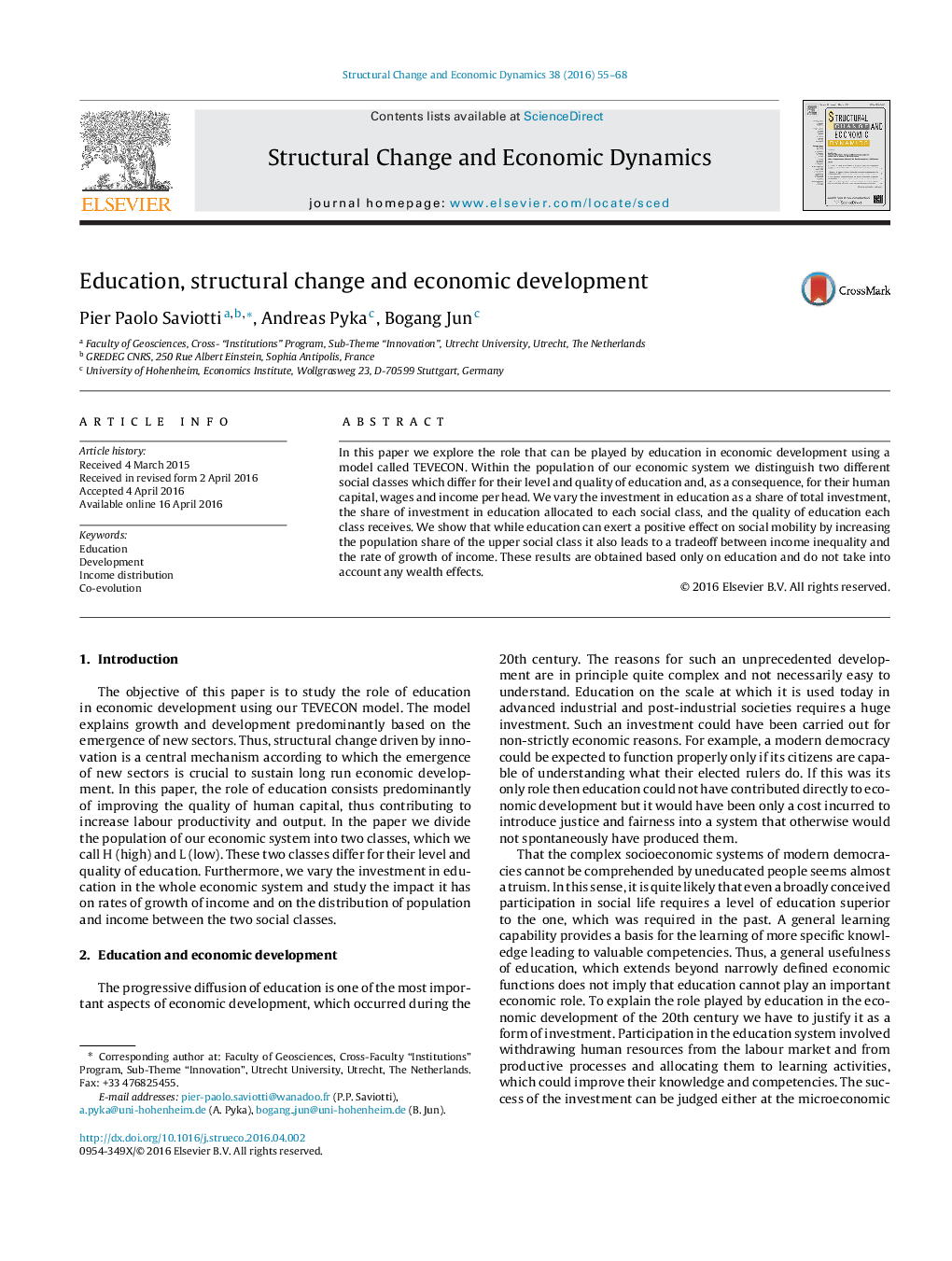| Article ID | Journal | Published Year | Pages | File Type |
|---|---|---|---|---|
| 988267 | Structural Change and Economic Dynamics | 2016 | 14 Pages |
•The modifications requested by the reviewers have been introduced.•In the manuscript they have been left in blue to make them clearly identifiable.•Our replies to the reviewers' questions are given in a separate file called ‘Reviewers Comments and Answers. The location of our modifications is indicated. Here as well our replies are in blue.
In this paper we explore the role that can be played by education in economic development using a model called TEVECON. Within the population of our economic system we distinguish two different social classes which differ for their level and quality of education and, as a consequence, for their human capital, wages and income per head. We vary the investment in education as a share of total investment, the share of investment in education allocated to each social class, and the quality of education each class receives. We show that while education can exert a positive effect on social mobility by increasing the population share of the upper social class it also leads to a tradeoff between income inequality and the rate of growth of income. These results are obtained based only on education and do not take into account any wealth effects.
